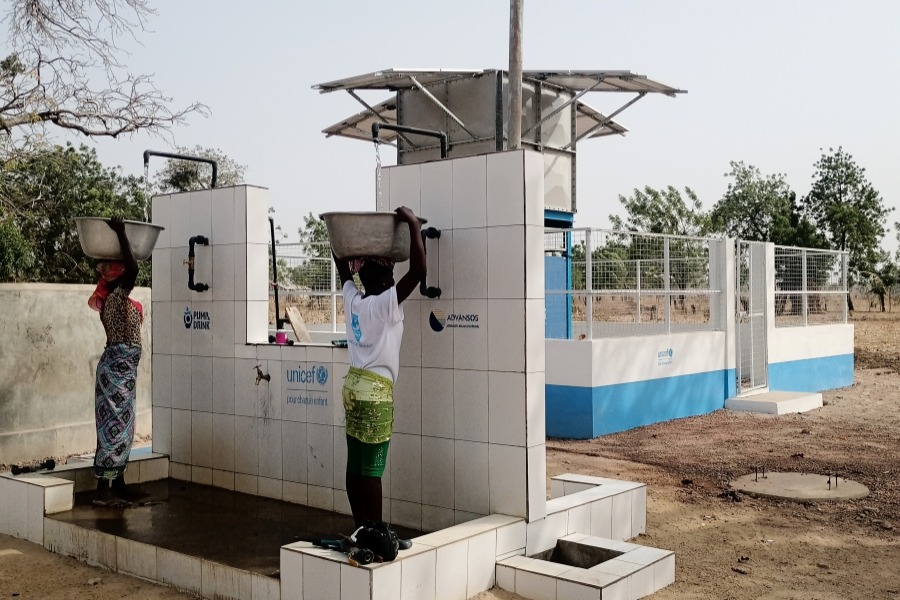

The Solutions Explorer lets you create alerts that match your needs. You can create several alerts and you will receive a notification each time a new Solar Impulse Efficient Solutions is labelled and matches your filters.
Your Search Alerts will show up here.
Sign in to create alerts for your filters and search terms.
Sign inDon't have an account?
Sign upAccess exclusive opportunities for Investor Members Only
The Investment Hub is a platform by the Solar Impulse Foundation that connects innovators with investors to fund scalable and sustainable solutions. Through tailored matchmaking, e-pitches, and a collaborative digital environment, it helps drive impactful innovation forward.
Sign in to explore a world of dynamic and high-potential investment opportunities.
Sign inDon't have an account?
Sign upDecember 11, 2022
Ministère de l'Eau et de l'Hydraulique Villageoise + UNICEF
Dapaong

In the Savanes region of northern Togo, near the city of Dapaong, two Pump&Drink stations have been installed by our local partner, replacing manual pumps to provide clean drinking water to the community. These stations feature a comprehensive solution including solar-powered pumping, water treatment, storage, and distribution, significantly improving access to cleaner water. The project, funded by UNICEF for the Ministry of Water and Village Hydraulics, has made a meaningful impact on the local population. To date, over 350 Pump&Drink systems have been deployed across Ivory Coast, DRC, Togo, and Benin, each aimed at enhancing the living conditions of communities.
With Pump&Drink stations, people no longer need to boil water for drinking, and solar-powered pumping eliminates the need for diesel pumps or grid-connected electrical pumps. This fuel-free solution reduces expenses for both boiling and pumping water. Additionally, the time saved from water fetching allows communities to focus more on economic activities or attend school, further enhancing their quality of life.
The Pump&Drink range aims at providing safe drinking water to rural communities of up to 5,000 people in emerging countries. Its design makes it durable, and sustainable and requires little maintenance. Thanks to solar panels, the water is pumped from boreholes or wells and flows through a treatment line that eliminates the particles in the water and adds a specific amount of chlorine to make the water potable. After this step, the water quality respects the WHO's bacteriological recommendations for drinking water. Then, an elevated water tank allows water distribution even after sunset or when there isn't enough sun. The distribution is made by 4 taps at ground level and 2 at a height that allows women to fill their water tank on their head, and a lighting pole gives light after the sunset. A remote monitoring system sends water production data to a cloud and gives information on maintenance needs so that local technicians can give a quick on-site response.
Share
The information set out above, is solely for the purposes of information and the Solar Impulse Foundation does not provide any guarantee as to its authenticity, completeness or accuracy. This information does not constitute investment advice or a recommendation to buy into, transact or to enter into any agreement with any of the parties or persons mentioned above. Potential investors or interested parties are solely responsible for their investment or business decisions and for performing any due diligence required by the circumstances. The innovator has asserted ownership of the intellectual property rights for images, videos, and content showcased above, affirming full and unrestricted usage rights, and has provided explicit permission for the Solar Impulse Foundation to publish such information designated as "public" in the application form.